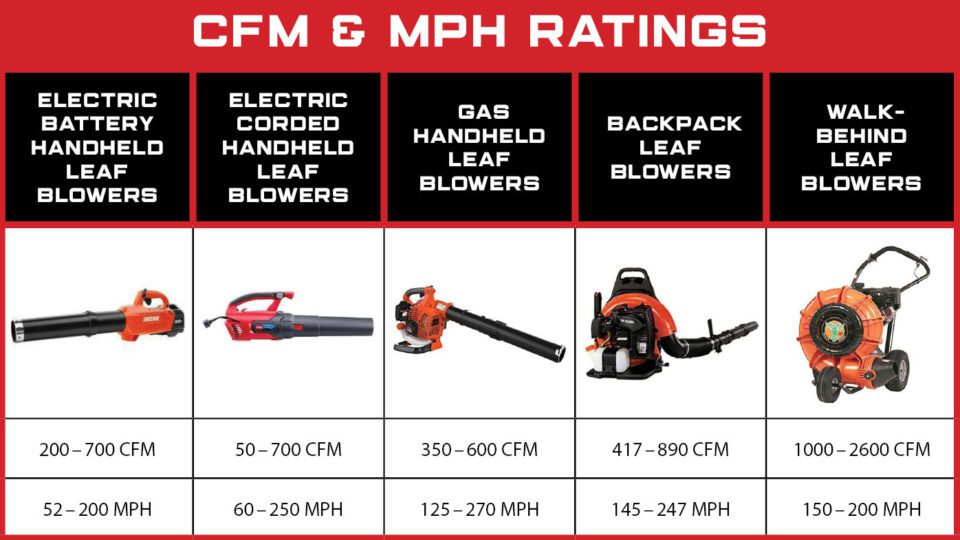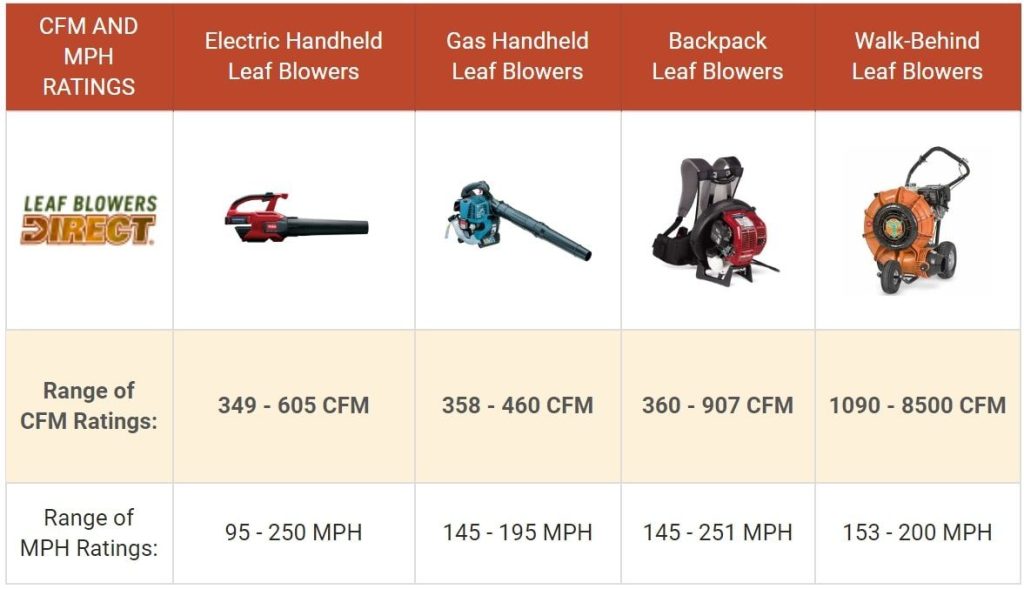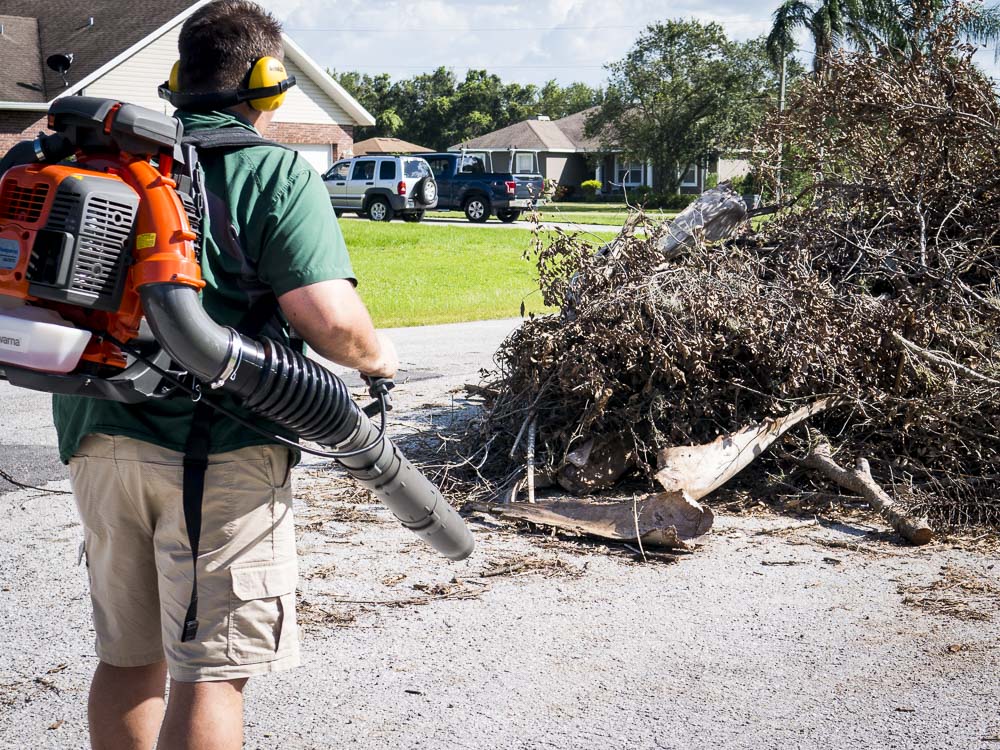When it comes to choosing a leaf blower, you might find yourself pondering over the debate between MPH and CFM.
The question arises: Is it better to have more miles per hour (MPH) or cubic feet per minute (CFM) in a leaf blower?
With MPH referring to the speed at which air exits the blower and CFM measuring the volume of air moved per minute, it’s essential to understand the significance of both factors to make an informed decision.
In this article, we will explore the advantages and disadvantages of each, allowing you to determine which aspect holds more weight when efficiently tackling those fall leaves.
Introduction
When maintaining a pristine and tidy outdoor space, a leaf blower is an essential tool in every homeowner’s arsenal. However, with so many options available in the market, it can be overwhelming to choose the right leaf blower for your specific needs.
One of the primary considerations to consider is the blower’s MPH (Miles Per Hour) and CFM (Cubic Feet per Minute) capabilities. Understanding the significance of MPH and CFM will help you make an informed decision and ensure that your leaf blower is up to the task.
Understanding Leaf Blowers
Different Types of Leaf Blowers
Leaf blowers come in various types, each offering its own set of advantages and limitations. The three major categories include handheld leaf blowers, backpack leaf blowers, and walk-behind leaf blowers.
Handheld leaf blowers are lightweight and perfect for smaller yards and quick cleanup tasks. Backpack leaf blowers provide more power and are designed for more significant properties or professional use. Walk-behind leaf blowers are ideal for heavy-duty jobs and large areas but require more physical effort.
Importance of MPH and CFM
MPH and CFM are two essential metrics that determine the performance of a leaf blower. MPH refers to the speed at which the air exits the blower’s nozzle, while CFM measures the volume of air blown by the blower per minute.
Both factors are crucial in the blower’s blowing power and efficiency. While a high MPH ensures the air can reach farther distances, a high CFM guarantees that a greater volume of air is being pushed, essential for moving heavier debris.
Choosing the Right Leaf Blower
Selecting the suitable leaf blower ultimately depends on your specific needs and the characteristics of the area you wish to clean. Consider factors such as the size of the area, the type of debris you expect to encounter, your comfort in handling different types of blowers, and the intensity of the job at hand.
By carefully evaluating these factors, you can narrow your options and choose a leaf blower that suits your requirements perfectly.
What is MPH?
Definition and Meaning
MPH, or Miles Per Hour, is a unit of measure used to determine the velocity of the air expelled from a leaf blower’s nozzle. It indicates how fast the air travels, which is particularly important when dealing with debris located further away. A higher MPH rating means the air is traveling at a faster speed.
Implications for Leaf Blowers
The MPH rating of a leaf blower directly affects the distance the air can reach. A leaf blower with a higher MPH can blow debris further away, making it suitable for larger yards or areas with scattered leaves and sticks. However, the ultimate effectiveness of the MPH is influenced by other factors, such as wind conditions and the blower’s overall design.
What is CFM?
Definition and Meaning
CFM, or Cubic Feet per Minute, is a measurement used to quantify the volume of air flowing through a leaf blower’s nozzle in one minute. A larger CFM indicates a greater volume of air being moved, enabling the blower to tackle heavier and more stubborn debris efficiently.
Implications for Leaf Blowers
The CFM rating of a leaf blower is crucial when dealing with dense or wet debris, such as soggy leaves or clumps of grass. A higher CFM allows the blower to exert enough force to dislodge and move these heavier particles effectively. It is worth noting that a high CFM doesn’t necessarily guarantee a powerful blowing experience if the MPH rating is low.
Comparing MPH and CFM
Key Differences and Similarities
MPH and CFM are both critical metrics, but they serve different purposes regarding leaf blowers. MPH primarily focuses on the speed and distance the air can travel, while CFM concentrates on the volume or quantity of air being pushed. While both factors contribute to the overall effectiveness of a leaf blower, the importance of each may vary depending on the job at hand.
Effects on Blowing Power
The blowing power of a leaf blower results from a combination of MPH and CFM. A high MPH enables the blower to blow debris further away, while a high CFM ensures that a substantial volume of air is available to move the debris effectively. It is the synergy of both factors that determines the overall power and efficiency of the leaf blower.
Effects on Efficiency
The efficiency of a leaf blower is closely tied to its ability to quickly and thoroughly clear debris. A high MPH allows for faster completion of tasks, mainly when dealing with lighter and less compact debris. On the other hand, a high CFM is essential for efficiently clearing heavier and wet debris, reducing the need for multiple passes over the same area.
Factors to Consider When Choosing a Leaf Blower
Nature of Job
Consider the type of job you intend to use the leaf blower for. If your primary goal is clearing dry leaves from a large yard, a leaf blower with a higher MPH would be more suitable. However, if you anticipate dealing with damp and compact debris or heavy grass clippings, prioritizing CFM would lead to a more practical choice.
Size of the Area
The size of the area you need to clean is an essential factor in determining the right leaf blower for you. Smaller yards may not require an extremely high MPH or CFM rating, as the blowing power needed is minimal. Conversely, more significant properties or commercial spaces may benefit from a leaf blower with a higher MPH and CFM to cover more ground efficiently.
Type of Debris
Understanding the type of debris prevalent in your yard will assist you in selecting the appropriate leaf blower. Light and easily movable debris, such as dry leaves, can be effectively handled with a higher MPH. However, a higher CFM rating becomes crucial to ensure efficient clearing if you frequently encounter dense debris, such as wet leaves or mulch.
Personal Comfort and Handling
Comfort and ease of use should never be overlooked when choosing a leaf blower. Different blowers, such as handheld, backpack, and walk-behind blowers, offer varying levels of comfort and maneuverability.
Consider the blower’s weight, grip, and ergonomics to ensure it is comfortable to operate for extended periods.
Importance of MPH
Blowing Power
A higher MPH rating enhances the blowing power of a leaf blower, enabling it to move debris over greater distances. This is particularly beneficial for larger yards or areas with scattered debris. With a high MPH, you can effectively clear leaves, twigs, and lightweight debris in less time.
Clearing Surface Debris
One of the primary uses of a leaf blower is to clear surface debris, including dry leaves and small twigs. A higher MPH allows the air to reach further and move the debris efficiently, ensuring your outdoor spaces remain clean and free from clutter.
Importance of CFM
Air Volume and Productivity
CFM plays a significant role in improving productivity when using a leaf blower. With a higher CFM rating, the blower can move a larger volume of air, enabling you to clear a larger area in a shorter period. This is especially advantageous when dealing with more significant properties or jobs that require a higher level of efficiency.
Clearing Heavy and Wet Debris
A higher CFM rating is crucial for tasks involving wet leaves, grass clippings, or other heavier debris. The increased air volume helps dislodge and move the heavier particles effectively, preventing clogs or inefficiencies.
If your yard frequently has damp or tightly packed debris, prioritizing CFM will ensure swift and efficient cleaning.
Trade-Offs and Finding the Right Balance
Understanding the Trade-Offs
While a higher MPH may result in a longer blowing distance, it may not necessarily translate to a greater blowing power if the CFM rating is low.
On the other hand, a higher CFM alone may not be able to clear debris that is located far away. Therefore, it is essential to balance MPH and CFM, ensuring that both factors are conducive to your specific needs.
Finding the Balance
The optimal balance between MPH and CFM largely depends on the nature of your job and the characteristics of your yard. Identifying the ratio that suits your requirements is crucial.
For example, if you have a large property with scattered leaves, a leaf blower with a higher MPH might be more suitable to cover a larger area. However, if clearing wet leaves is a regular occurrence, a higher CFM becomes necessary, even at the expense of some MPH.
Tailoring to Specific Needs
Remember that there is no one-size-fits-all solution for selecting a leaf blower. The choice ultimately depends on your specific needs and the particularities of your outdoor space.
Evaluate factors such as the job’s intensity, the area’s size, and the type of debris you are likely to encounter. By tailoring your choice to your specific needs, you can ensure that your leaf blower is optimized for optimal performance.
Conclusion
When choosing a leaf blower, the dilemma of whether to prioritize MPH or CFM can be daunting. However, understanding the significance of both metrics is critical to making an informed decision that aligns with your needs.
By considering factors such as the job’s nature, the area’s size, and the debris type, you can strike the right balance between MPH and CFM. Whether you prioritize blowing power or efficient clearing, selecting the suitable leaf blower will ensure that your outdoor spaces are clean and beautiful with minimal effort.








































